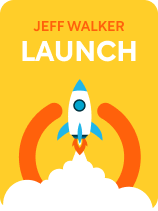

This article is an excerpt from the Shortform book guide to "Launch" by Jeff Walker. Shortform has the world's best summaries and analyses of books you should be reading.
Like this article? Sign up for a free trial here.
What should you talk about with your customers before you try to sell to them? How can you stand out in the market?
To thrive in the digital marketing arena, Jeff Walker suggests you take advantage of mental triggers—brain shortcuts that influence people to do certain things—in your product launch. These triggers support three key factors of a successful launch: value, relationships, and desire.
Keep reading to learn how to get people to buy your product by integrating all three of these factors.
#1: Build Value
Walker’s advice on how to get people to buy your product starts with building value in your product. When you give value before mentioning sales, people will be more eager to purchase your product down the line. Many entrepreneurs fixate on the selling aspect when starting up a new product or business. Walker argues that this approach makes it hard to stand out in digital marketing, with thousands of voices hawking products online. Instead, he writes that, when you focus on value first, the sales will come naturally.
How does this work? When you provide value free of charge, you’re establishing trust and authoritativeness. Even just by giving quality information—a tip or trick—you’re giving people a taste of what your product or service will be, as well as your expertise. When you’re generous with free content, people will appreciate you and feel more inclined to reciprocate by buying your product.
(Shortform note: Walker says you should provide value to your prospects, but what makes something valuable? Experts have created a four-tiered pyramid illustrating how customers value products and services. From bottom to top, people value things that fulfill practical, emotional, transformational, and philanthropic needs. Experts argue that your product can’t satisfy the higher tiers (like personal transformation or making a social impact) without meeting some basic needs (like reducing effort or saving time). When following Walker’s launch strategy, consider what kinds of needs you want to address to ensure you’re offering something that your customers value.)
#2: Build Relationships
Walker writes that, to launch a product successfully, you must forge strong relationships with your buyers and potential customers. When you do this, you’ll be more memorable than just loud and stand out from your competitors. One way to build these relationships is to pace your launch over the course of several days or even weeks. Instead of a single impression, you can have more sustained and regular interactions.
Additionally, a spaced-out launch creates room for conversations to flow and communities to form. When you build a community around your product, you form not only robust relationships with your customers but also connections between your buyers themselves, which generates more momentum in your launch. Walker says this works because of social proof—when people base their actions on other people’s opinions or experiences, such as deciding on a restaurant because of good reviews. When people hear others expressing their eagerness to buy your product, they tend to be more willing to do so themselves.
(Shortform note: Other experts agree with Walker’s emphasis on building customer relationships, adding that developing a sense of community helps retain customers more than loyalty programs do. When you create a community for customers to interact with like-minded people, you’re creating positive experiences. This is crucial as, according to research, you need 40 positive customer experiences to make up for a single negative review. Therefore, by following Walker’s recommendations to market your product by building relationships, you can foster loyalty for long-term business growth.)
#3: Build Desire
To get people to purchase your product, you need to convince them that they want it. To accomplish this, Walker suggests you treat your product launch like a major event to stir up anticipation and build desire. Just like an advent calendar to Christmas, turn your product launch into a countdown that generates excitement that will unleash on your launch day. Walker reasons that this approach activates people’s natural desire to be a part of something bigger.
(Shortform note: Walker’s strategy of turning a product launch into an event is grounded in psychology. Experts explain that our instinct to anticipate events developed for evolutionary reasons and continues to serve our mental health and well-being. When we look forward to an event, our anticipation serves as a form of emotion regulation and releases dopamine, a neurotransmitter that increases positive feelings and decreases negative ones. When customers feel good while waiting for your product to release, they’re more likely to want to purchase your product because their brains associate it with positive feelings.)
Just like an event, however, your launch must have an endpoint. By having a definite window, you create an urgency to buy your product. When things are limited, people feel more hastened to make a decision.
(Shortform note: When you set an end date for your launch, you’re taking advantage of FOMO, or the fear of missing out on something good. Psychologically, this fear comes from our basic need to belong, and experts say that 60% of people make purchases due to FOMO. You can take Walker’s scarcity tactic a step further by adding a countdown timer to your launch. By including a countdown clock in their email, one company’s Black Friday campaign achieved a 400% increase in conversions.)

———End of Preview———
Like what you just read? Read the rest of the world's best book summary and analysis of Jeff Walker's "Launch" at Shortform.
Here's what you'll find in our full Launch summary:
- How to stand out in an age when anyone can start a business online
- How you can market and sell a product with little to no start-up costs
- Why you should start an email list before you even launch your product






